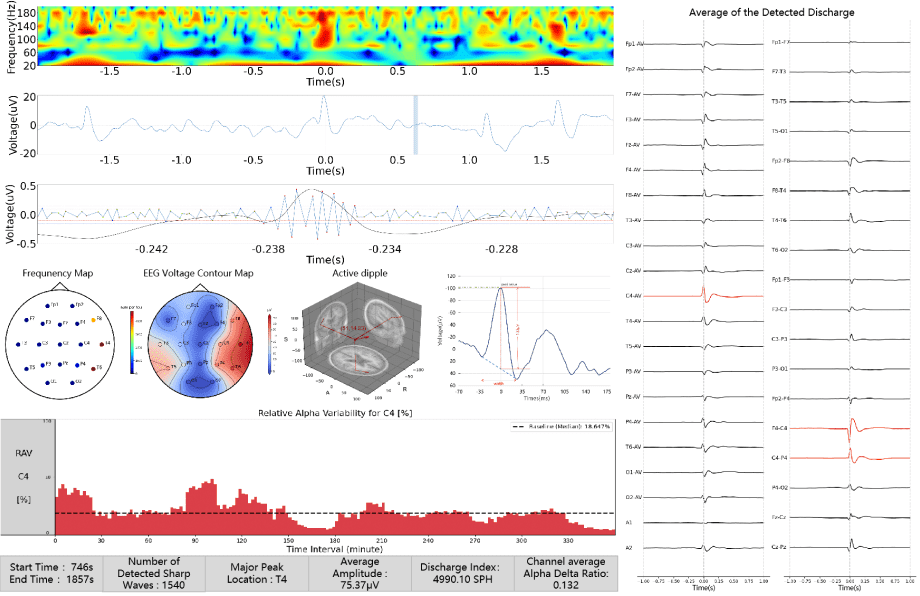EEG activity contains rich information, but due to the lack of high-precision quantitative analysis algorithms, EEG has long relied on manual visual inspection for qualitative analysis, placing significant pressure on doctors' subjective judgment. In recent years, the widespread use of multi-channel, high-sampling-rate long-term video EEG technology has posed greater challenges to conventional visual inspection-based analysis methods. Through digital signal processing technology, quantitative analysis methods deeply analyze EEG signals, precisely statistics and visually present the epileptic characteristics of EEG signals, better assisting doctors in making scientific judgments about relevant pathological patterns and providing effective help for clinical diagnosis and research.


